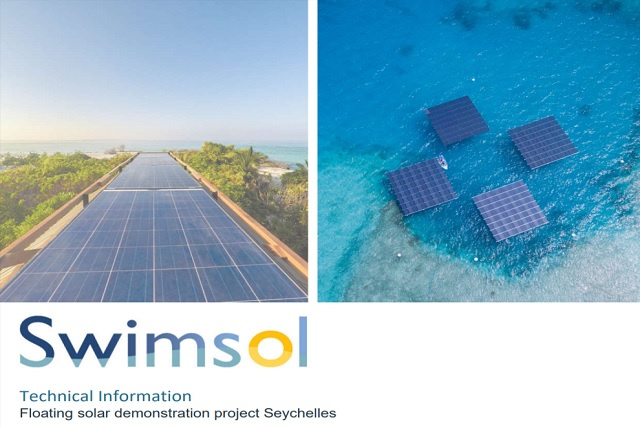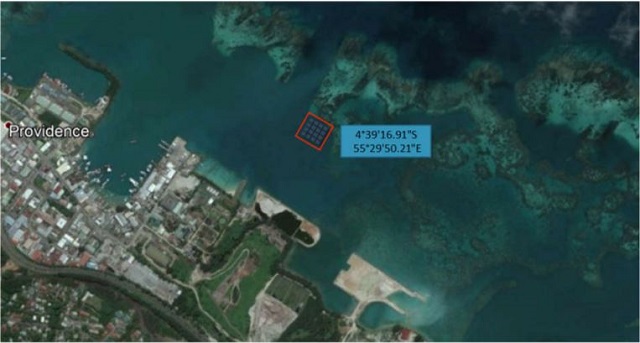Floating solar demonstration project to be installed off Seychelles’ coast

The project is a first for the Seychelles and it will exhibit the technical concept and show benefits of offshore solar photovoltaic compared to fossil fuel power(Swimsol)
(Seychelles News Agency) - A floating photovoltaic demonstration project is expected to be installed off the coast of Seychelles’ Providence Industrial Estate.
The project - a first for the island nation - will exhibit the technical concept and show benefits of offshore solar photovoltaic compared to fossil fuel power. The project will be implemented by Swimsol in partnership with Energy Solutions Seychelles. Swimsol is a solar energy provider for Maldivian resorts and pioneer in a marine floating solar development.
Swimsol, which says it developed the world's first commercial marine-grade floating solar system, received a grant from the Nordic Development Fund (NDF) to develop an offshore floating demonstration project in Seychelles.
“To harness the full potential of solar energy in Seychelles, solar photovoltaic should not only be installed on land and in sheltered water areas but also offshore. Floating photovoltaic is the option to save limited space on land,” Swimsol said.
Following consultation with the infrastructure ministry, the site was identified. It’s a piece of the public domain sea area of 150 by 150 meters off the coast of Providence Industrial Estate on the east coast of the main island of Mahe.
The team found that the site was ideal for a demonstration, research and teaching project as it is easily accessible. Additionally, no corals are located under the site, hence it was outlined that there will be no negative environmental impacts.
 |
| The floating photovoltaic demonstration project is expected to be installed off the coast of Seychelles’ Providence Industrial Estate. (Swimsol) Photo License: All Rights Reserved |
Ian Charlette, the environmental consultant for this project, told SNA last week that this demonstration project is an opportunity for all stakeholders - the Seychelles Energy Commission, Ministry of Environment, Blue Economy Department and other sectors such as Public Utilities Corporation (PUC) - to see how such a project works so that frameworks can later be put in place.
“People should not come and say that we are not ready for this. Of course, we aren't as it has never been done before but through a demonstration project you can see if we can scale up or know the issues that there are. It shows the pros and cons as well. Then there will be people who will want to carry out researches such as UniSey and NISTI. This is an opportunity to collect data.”
The consultant added that “in Seychelles, where there is a lack of land, the sea is the best area to do such a project. Furthermore in Seychelles, people prefer the creoleroofing style with slanting roofs. This is not the best type of roof for solar panels. This project is not going commercial, the team would like to just break even.”
Seychelles, a 115-island archipelago in the western Indian Ocean has an energy policy 2010-2030 as a guide towards reducing consumption of fossil fuels by 15 percent by 2030. The demonstration project will help contribute to the goal.
In a previous interview this year, the chief executive of the PUC, Philippe Morin told SNA that “close to 3.5 percent of energy in the power grid comes from renewable energy.”
The delivery of the floating platforms takes between six to nine months, including production, shipping, assembling and commissioning. Assembling and mooring take around two days per platform per production line.
For the recommended solar capacity of 355-kilowatt peak (kWp), the solar power can be integrated into the national grid seamlessly through PUC and is expected to be sold at the fuel marginal costs.





